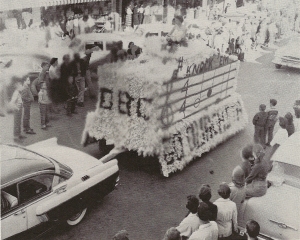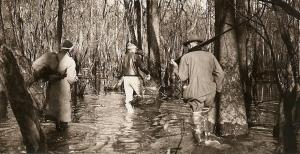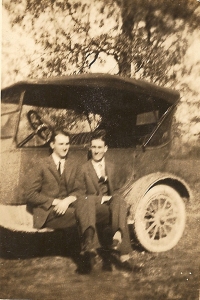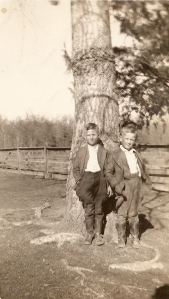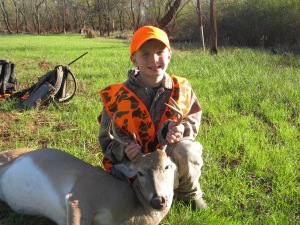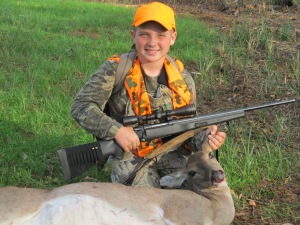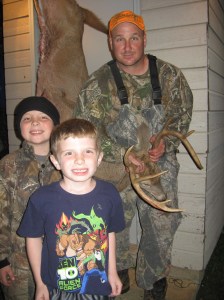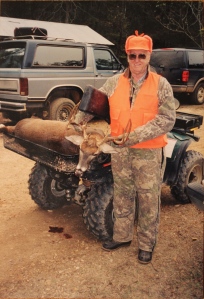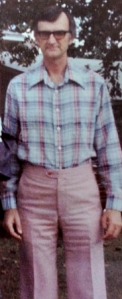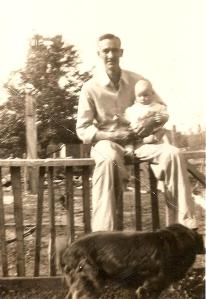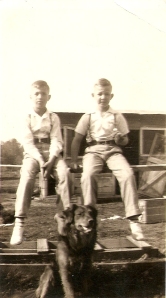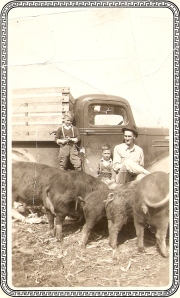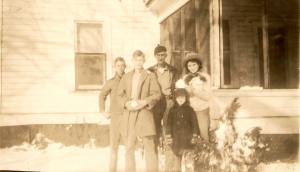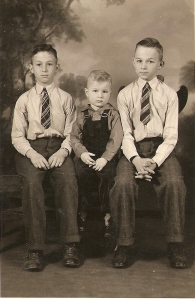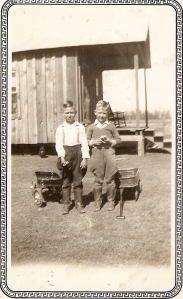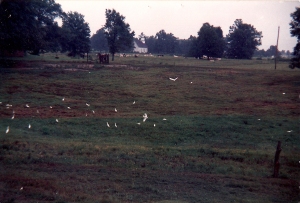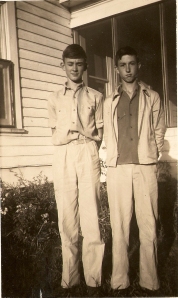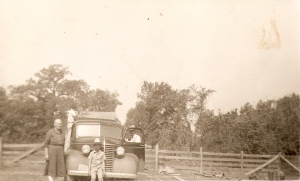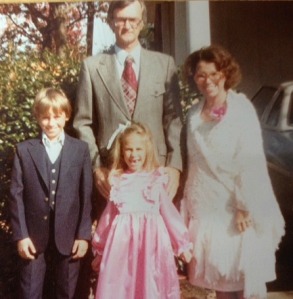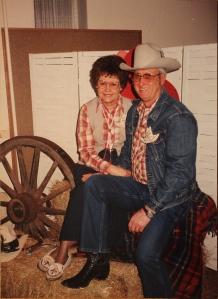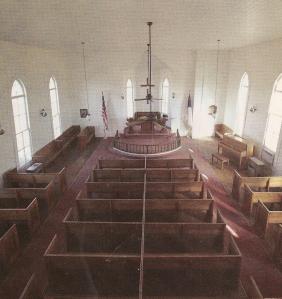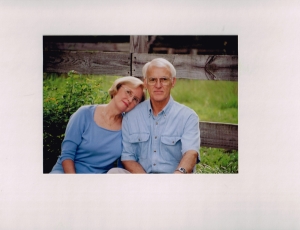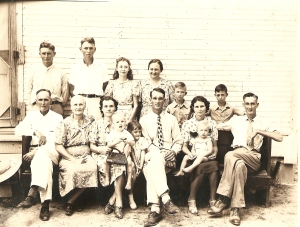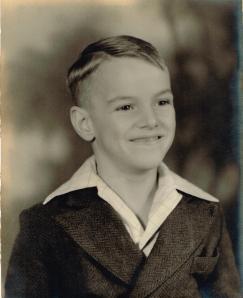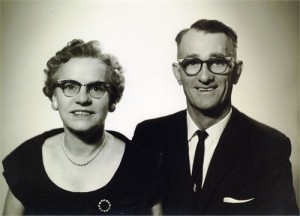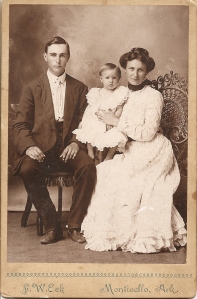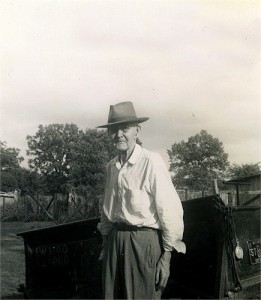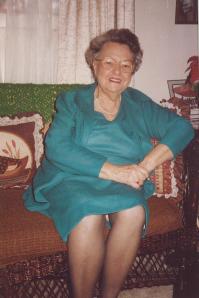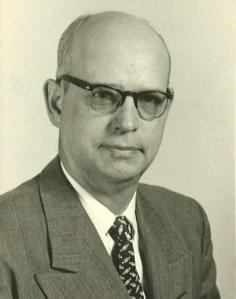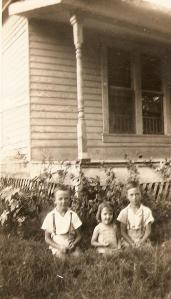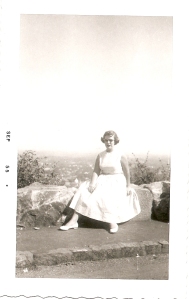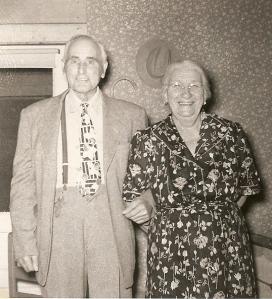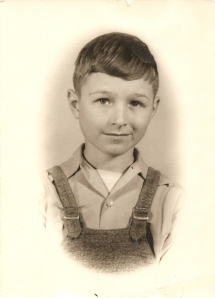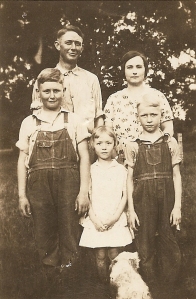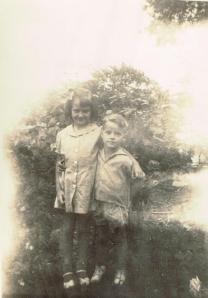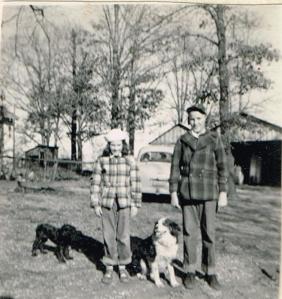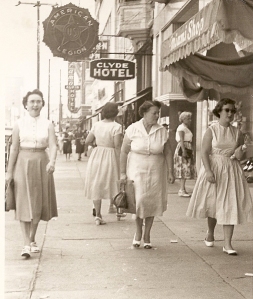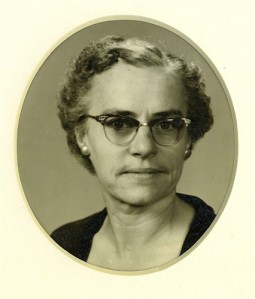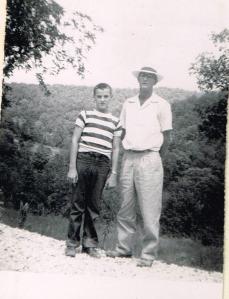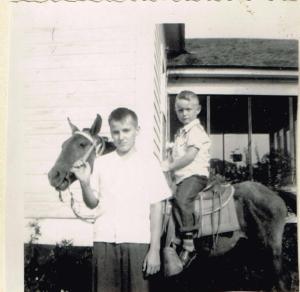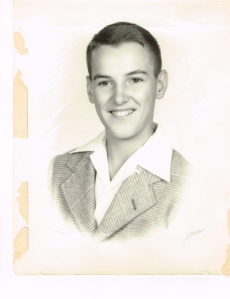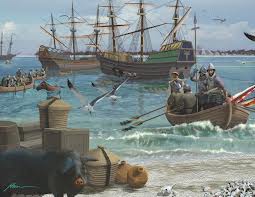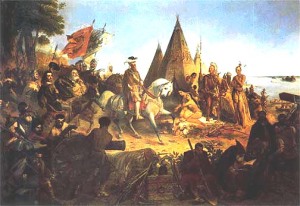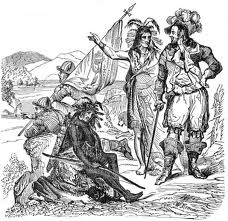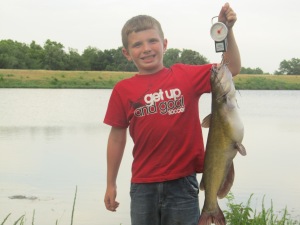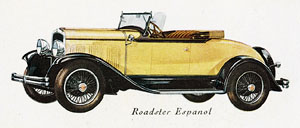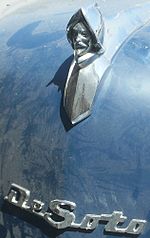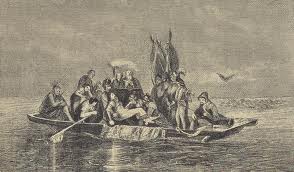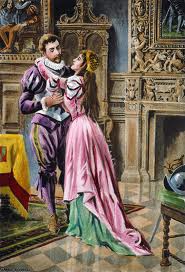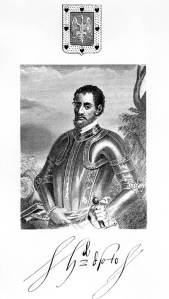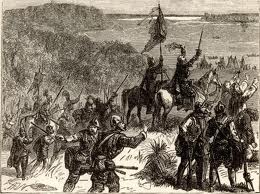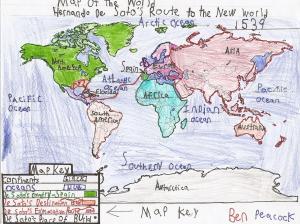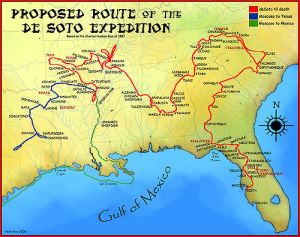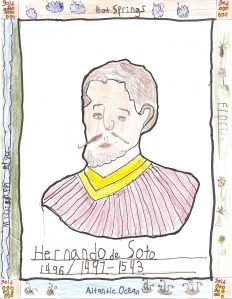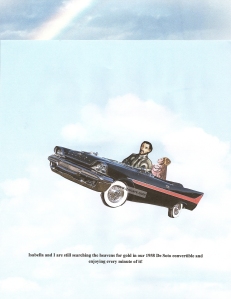“If it wasn’t for retrospect and introspect
I ‘spect I wouldn’t have any ‘spect at all!”
—Jimmy Peacock
Dedication
This post, a story about a bit of nostalgic nonsense that took place during our freshman year at Ouachita (WASH-a-taw) Baptist College in 1956-57, is dedicated to the memory of our late and lovely classmate Sara Lynn O’Cain. For more about Sara and her part in this story, read the following memoir by Hunter Douglas and my editorial notes at the end of it.
Ouachita Memories
In this Halloween post I continue a subject that I began in earlier posts: memories associated with our alma mater, Ouachita Baptist College (now University), and some OBC students and graduates who were a part of our shared lives.

Ouachita Baptist College (now University) as it looked in 2011 with the Ouachita River in the upper left corner; our freshman men’s residence in 1956, O. C. Bailey Hall, is the small right-angled dorm closest to the river (to magnify, click on the photo used by permission of Ouachita)
I referred to this subject in earlier posts about Mari and me such as “Facts about Marion Williams Peacock,” “The Peacock Love Story/The Passing of a Friend,” and “Our Honeymoon Was No Honeymoon for Mari.”
Ouachita, its former president, and some of our fellow Ouachitonians are also the subjects of three other posts.
One, titled “Occupation in Exile, Deliverance in Time,” began with an anecdote told about Dr. Daniel Grant, a former president of Ouachita, who granted me permission to quote it in that January 2012 essay about my ongoing “Oklahomian Exile.”
A second, which appeared at Christmas time, was titled “The Three Unwise Men: An Arkansas Christmas Memory.” It involved my OBC buddies Charles Wright and Cullen Gannaway and me on a “pessimistic pilgrimage” to Hot Springs on Christmas Eve in 1960.
A recent post titled “Country Come to Town/A Youthful Trip to Dallas” also featured me and Charles Wright and part of Mari’s Clique and our 1958 trip to Dallas to attend the wedding of our mutual McGehee/Ouachita friend Jarrell Rial.
But this Ouachita post is a bit different from the others in two ways:
First, it takes place in 1956-57 and involves several members of our freshman class and one of the most outlandish pranks we pulled during that memorable first year at OBC; and
Second, it is written not by me but by Hunter Douglas, one of my closest buddies in that freshman class and one of the other leaders in that nefarious enterprise. I asked him to write his version of that story because he seems to recall the details of it much better than I do.
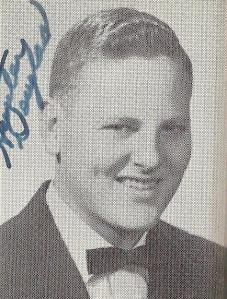
Hunter Douglas as he looked in our 1956-57 OBC yearbook with part of his handwritten note to me (to magnify, click on the photo used by permission of Ouachita)
So now here is Hunter Douglas’s memory of the now famous and infamous saga of “The Return of the Trumpet” just as he wrote it. I have edited it only slightly by shortening some paragraphs to fit the blog format. I have inserted some poor quality photos scanned from our 1956-57 Ouachita yearbook with permission of Ouachita and the “usual suspects” involved. There are some explanatory notes at the end of the post.
The Return of the Trumpet
By Hunter R. Douglas
Also known as “Guess What, Brown!”; “Sidney Brown Saves O. C. Bailey”; and more privately by the author as “Hippo Bill’s Revenge,” this is a story concerning times at Ouachita Baptist College during the freshman days of the Class of 1960.
In 2010 the Ouachita Fiftieth Reunion questionnaire asked us members of the Class of 1960 to share our favorite OBC stories. Jimmy Dale Peacock told me that his favorite story was about The Trumpet, but that he would rather another of us take the responsibility (blame) for the writing.
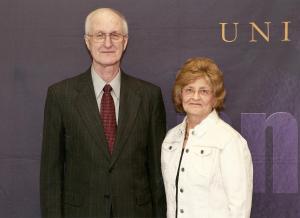
Mari and me at the Ouachita Class of 1960 fifty-year reunion held in April of 2010 (to magnify, click on the photo used by permission of Ouachita)
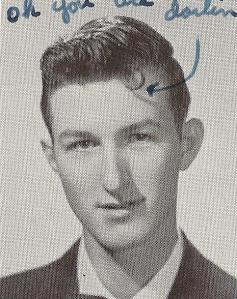
Me as I looked in the 1956-57 OBC yearbook with part of a note I signed to myself reading “Oh, you are darlin’!” with an arrow pointing to the curl of hair on my forehead a la Elvis Presley (to magnify, click on the photo used by permission of Ouachita)
Joseph P. Dempsey was thereafter consulted, and after being interrupted several times by convulsions into laughter, we were agreed that it should be written, secrecy not being an issue at this time—the statute of limitations, etc.
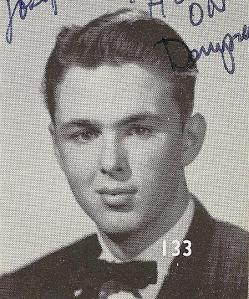
Joseph P. Dempsey, known to us as Joe, as he looked in our 1956-57 OBC yearbook with part of his handwritten note to me (to magnify, click on the photo used by permission of Ouachita)
There have been those who would question the truth of some of these stories being told. The reputation of the institution being what it is, we students were expected to develop high standards of performance in life, and not waste valuable time, especially on skullduggery. Truth is always better than fiction, however, and this is the truth of it, as best we can recall it at this time.
In our freshman year, O. C. Bailey was the new dormitory for men. Some in our class were among the first occupants, and right in the beginning we formed a men’s fellowship dedicated to keeping boredom away from our doors by the means of smiling faces. There have been claims that we were the inspiration for the original smiley face logo. This is the same logo Bob Riley used with the patch over one eye, but that is another story.
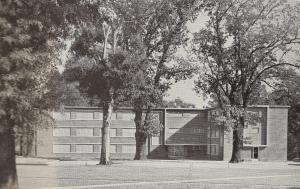
O.C. Bailey Hall as it looked in 1956-57 when it was first built and some of our class were among the first students to occupy it (to magnify, click on the photo from the OBC 1956-57 yearbook, used by permission of Ouachita)
The dorm custodian, since the place was brand new, was expected to keep things looking very good. Our custodian was first known as “Mr. Miller,” because the dorm mom always called him that. We guessed he was sixty years of age at the time since he was so cranky. But he did try extra hard to please. Maybe too hard. We took notice of that.
Mr. Miller actually was harmless enough. No one had any reason to be afraid of him, even though he had a volatile temper, instantly available. He was quite a singer of hymns. Each day during classes as he ran the floor buffing machine in the halls, he would sing. Since this was before the advent of today’s praise music, there was never any question that it was both dignified and reverent, though homely.
We would hear the hum of the machine being accompanied by his singing of some beloved old hymn. Then the confounded contraption would malfunction. The buffer would go silent, and the words of the hymn would remain suspended in midair, interrupted by angry and loud curses, punctuated by something that sounded like a man kicking the stuffings out of a buffer. We figured that Mr. Miller had not recovered his religion from some previous traumatic experience. Since some of us came from the Delta, we knew about cotton farming, and we thought with some sympathy that maybe he had worked with mules.
When the machine decided to work again, Mr. Miller would resume his songs of praise, and go on buffing the floor as if nothing had happened. But, something had happened. We had taken notice of it.
We were still new freshmen when I got into a more personal situation with the good man. I was what some call a “Beagle Man.” I was raising beagles before I came to Ouachita, and I still have my beagles fifty-four years later. If this entitled me to some consideration, Mr. Miller did not give me any. We all knew that we weren’t supposed to keep a beagle in O. C. Bailey. I kept old Bill outside. That was not exactly like trying to keep him in the room, and I said so. And that is not exactly what started the trouble either.
What happened was that Mr. Miller saw my dog, and fearing the necessity of having to sweep the lawn for “land mines,” went after Bill with a broom. Now this dog was not just any mutt. His registration papers showed that his official name was “Carry Line Buddy’s Hippo Bill.” This was beagle royalty, the world championship bloodlines. I held him in great esteem. Also, it was not Bill’s fault that he was lame in one back leg and had to run on only three legs, and thus could not quite escape Mr. Miller’s wrath. Hippo Bill was sent home, but not forgotten. I had taken notice of it.
Mr. Miller was making a name for himself. It was noticed that he was not smiling. There was discussion in the dorm of how to teach the poor man how to smile like us. We sought a means to redeem him from his habitual curses, excesses of temper, and general unpleasantness. We were college boys now, Ouachitonians even. If anybody could teach him, we college boys could.
Since his ill temper and low self-esteem had brought dishonor upon the Miller name, we began to call him something else. I am not sure as of this writing just exactly how we came to a consensus about what to call him. In order that he might redeem his good name and take pride in it, we began to call him “Sidney Brown.” Of course, since it was not his real name, we got a real smile out of that. Predictably, he did not. Concerning the name “Brown,” it has been alleged that there took place some idle and irresponsible talk concerning his likely reaction if a certain container of brown paint got turned over above the stairwell and by an uncanny coincidence fell into the hair of his head. Anyway, that never happened exactly that way.
What happened was that he showed his temper again, even though the Brown name is an honorable name. He thus ignored and rejected a clear warning that bad luck might come upon him if he did not smile more. He just got grumpier. He even dared to speak to us by other than our real names. This information is given in order to clear up the confusion as to the identity of Sidney Brown. The reader will take note of him.
The Trumpet is to be identified with the band float in the 1956 homecoming parade. The homecoming season was a time when things happened. There would be marching units from the military and the band, and display of the floats with their queens. The floats had been constructed by the student organizations that were competing for the prize as best float. The band float, which was fervently and sincerely created, featured a large purple and gold trumpet, Ouachita’s school colors, following a musical theme. Now a trumpet made out of chicken wire and crepe paper might not have turned out to be the biggest nor most spectacular float, but the theme was most appropriate, and we band members had Sara O’Cain.
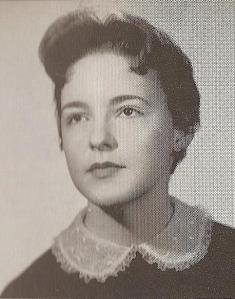
Sara O’Cain as she appeared in our 1956-57 OBC yearbook (to magnify, click on the photo used by permission of Ouachita)
Sara O’Cain from Pine Bluff was the band queen. Sara proudly represented the band and made up for whatever plain appearance the trumpet itself may have had. This is the same Sara O’Cain who cast the spell over my O. C. Bailey roommate, John McCown. We are reminded of Al Capp’s Dogpatch cartoon character, “Stupefyin’ Jones.” I was present when it happened, and I can tell you that all John did was look at Sara one time, which instantly stunned him of his normal senses. The rest of us fellows do not think he ever totally recovered again either. I never witnessed such a thing before, nor have I since.
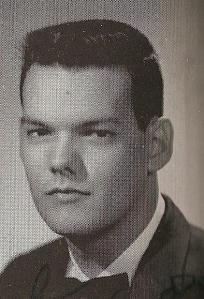
John McCown as he appeared in our 1956-57 OBC yearbook (to magnify, click on the photo used by permission of Ouachita)
John and I were friends as far back as the third grade, and my father had baptized both of us in the same baptistery at Dumas, just south of Pine Bluff. I thought I knew him. After this event, John left our fellowship without a sensible reason and formed the “Friends of Sara O’Cain Fellowship,” with John and Sara as the only members. They kept all their smiles to themselves, and the only way one could get into their group was to be born into it. By the time we graduated, there were only two new members, and they were not even students. In fact, they were mere infants.
I have wondered if something about the trumpet had anything to do with any of this, but John does not know. John does remember that Sara rode on the band float. He does not recall ever knowing about the return of the trumpet. There is some question that he remembers the trumpet at all. No wonder.
The trumpet was created by those in the band who, though few in number, worked hard together as a team so the band float could take its proper place, with Sara riding in her proper place. It was a good time, and it came to an end all too soon. The guys making the smiles, having agreed it was too soon, extended the festivities after their fashion. John McCown, being occupied elsewhere, missed out on the fun, and is therefore innocent of any of the following.
When the parade was over, there was this trailer which had to be returned to its owner. There remained this purple and gold orphan, a large stuffed wire trumpet contraption which had no known home. For those who believe in predestination, take note that the trumpet fell into good hands. It was duly discussed in O. C. Bailey by the interested parties. A Friends of the Trumpet Society was (informally) organized. The trumpet would not disappear into oblivion and be trashed, like the other floats. It bore the school colors, and represented the band as well. A decision was unanimously made that the proper place to both house and honor the trumpet was in one of the toilet stalls (locked from the inside, of course) in the third-floor bathroom in O. C. Bailey, near the showers.
The next day during classes the trumpet was present on the third floor at the time Sidney Brown normally came to clean up the bathroom. Many times history is made outside the public view. It appears that there were no unbiased witnesses present when the trumpet was found locked in that stall. We lament that there is no historical record of any kind that we know about which would tell us exactly what happened.
Today, the English department from some great university would surely pay a high price for a recording of the language for its students to study. A reality show would pay a fortune for a video. No recordings are known to exist. What is known to us is that when classes were over, the trumpet was not present in its place in the locked stall in the bathroom on the third floor of O. C. Bailey Hall. An investigation was made, and it was found that the trumpet had been unceremoniously dragged out in back of O. C. Bailey and thrown on the trash pile, with no regard for preserving its purple and gold colors. The Friends of the Trumpet took notice.
The next day during classes, the trumpet, which had been carefully restored to the locked stall in the bathroom on the third floor during the night, disappeared again. The trumpet was found this time not merely in rear of O. C. Bailey, but off the bluff, far down in the ravine entangled among the vines above the waters of the Ouachita River. It was not even considered safe to go down there. Brown seemed to be losing his temper again. The interested parties took notice.
The next day during classes, the trumpet having been restored to its proper place, a sign appeared on the stall door in honor of General Douglas MacArthur, which read, “‘I Have Returned.’ Signed, The Trumpet.” A grumpy sixty-year-old man who takes on a group of eighteen-year-olds is probably doomed to failure, but Brown was in no mood to take warning. He was not amused. There was no smile on his face, even though he was surrounded by a host of people who were smiling. Like the archangel Michael when disputing with the devil concerning the body of Moses, he dared not bring a slanderous accusation. (See Jude 1:9) Instead, he focused his wrath upon the hapless trumpet, which after that time could no longer be found anywhere on campus. An extensive investigation determined that the trumpet had been placed in residence at the Arkadelphia city dump. An appropriate committee was appointed. Notice was taken of it.
The next day during classes, the trumpet was again residing in the locked stall in the bathroom on the third floor of O. C. Bailey Hall, and another sign had appeared on the stall door which read, “Guess What, Brown!” The trumpet had changed a little this time, since garbage and refuse from the dump had become enmeshed in the chicken-wire frame. It was noticed that though the school colors were more subdued, the trumpet had maintained its glory. This time, you could know it was in there without even going inside the bathroom, since there was an unmistakable odor all over the third floor. Once again the opportunity to record the language was lost.
The trumpet disappeared again. Not only was it nowhere on campus, it was not to be seen at the dump either. A very intensive and time-consuming investigation by the committee finally revealed that the trumpet had this time suffered a regrettable and undignified fate. It had been taken back to the city dump, placed on a pile of combustible rubbish, and set afire. The charred remains had then been unceremoniously buried under a stinking pile of burnt rubbish and garbage by means of the city bulldozer. The only remaining visible evidence of its existence was a strand of burnt chicken wire barely showing from under the pyre, and this came to the attention of the committee.
Gone was the purple and gold. The bulldozer and the fire had reduced the trumpet to a twisted, charred, stinking wad of junk wire. Brown just ought not to have done that. We are reminded that a man’s sins will find him out. Notice was taken of it.
The next day during classes, the trumpet, now stripped of our school colors, in a most deplorable condition, ashes, garbage, stench and all, was found crumpled and piled onto the floor of that locked stall. That whole wing of O. C. Bailey reeked with the stench. A sign was present, which reminded Sidney Brown of his misdeeds. The sign read, “‘I have returned. You will never get rid of me. I will haunt you forever.’ Signed, The Trumpet.”
The next day during classes, word circulated that the trumpet was gone again. It had disappeared surely enough this time. No amount of investigation turned up even a clue. Homecoming had finally come to an end, and so the Friends of the Trumpet dissolved the committee and went on to the next smile.
It so happened later that I found myself out behind O. C. Bailey enjoying the view of the river, and having a friendly conversation with Sidney Brown. He was smiling now, and the subject of the whereabouts of the trumpet came up. Rather than throw a fit, he burst out laughing. In fact, it seemed to me more like cackling, if not choking.
“You’ll never see that @#$% @#*& *%$ again!” Sidney Brown exclaimed. “It’s half-way down to Noo-Aw-LEENS by now. I threw it off the Ouachita River bridge this time! Haw, Haw, Haw!”
Sidney Brown was laughing. We were laughing. Everybody was laughing. We never did know who got the last laugh.
Only The Trumpet knows. . .
Editorial Notes:
Ouachita Baptist College (now University) has been featured in earlier posts. It is located in Arkadelphia, Arkansas, an antebellum port city on the Ouachita River in the southwest part of the state. To learn more about Arkadelphia, click here.
Joseph P. Dempsey was of course my Ouachita buddy Joe Dempsey who, fifty-four years after the events in this story, designed this blog and its art work and helped me to launch it and continues to help me maintain it.
In regard to O. C. Bailey Hall, Hunter Douglas sent the following information in an email: “I did not mention in the story that my mother was on the OBU Board of Trustees when O. C. Bailey was built, and that she took pride that her son was among the first occupants. Her name was on the cornerstone plaque in the lobby. I regret very much that she did not ever get to see this story written.” What is strange about O. C. Bailey is that when Mari and I attended my Fifty Year Class of 1960 reunion in 2010, we took a guided tour of the campus which had changed tremendously in the forty years since we had last visited it. As our young female student guide led us by O. C. Bailey, I asked politely if we could go inside to revisit the third floor and the room that I shared with Jarrell Rial when we were freshmen in 1956-57. “I’m so sorry,” the young guide replied in a soft, sweet Southern Belle voice and tone, “but now O. C. Bailey is a women’s dorm.” We wondered if any of the “women” had ever pulled a “trumpet prank” on their janitor.
It is not known what became of Mr. Miller after our graduation from Ouachita in 1960. It is also not known what became of Hunter’s beagle named “Carry Line Buddy’s Hippo Bill.”
Bob Riley, a relative of Hunter’s and a decorated World War II veteran, was a professor of political science at Ouachita during our time there and wore a Rooster Cogburn-type eye patch.
To view a PG-rated clip of Stupefyin’ Jones in action from the movie version of Al Capp’s masterpiece, click here. Coincidentally, my first memory of the mystical powers of Stupefyin’ Jones was during the Christmas holidays in 1960. It was then that Charles Wright and I took two Ouachita coeds on a double date from McGehee to Pine Bluff, a distance of sixty miles, to see the musical film version of Al Capp’s Li’l Abner, in which Julie Newmar “stupefied” Jerry Lewis in that now famous scene linked above.
Sara O’Cain was a Ouachita beauty who married John McCown while both were students at OBC and who bore him two children before our graduation in 1960. Following is a brief biography of Sara contributed by her husband John at the time of the writing of this post in June, 2012:
Sara Lynn O’Cain was born January 12, 1938 in Pine Bluff, AR.
In the movie clip from Lil’ Abner, Jerry Lewis did a good job of showing how I was “stupefied” the first time I saw Sara.
We were married in Pine Bluff, AR on August 29, 1957. Sara died of cancer in Newport News, VA on March 28, 2005.
Just yesterday, for the first time in six years, I had all five of our children together–under one roof. That was very satisfying. There was (in order of birth):
Dawn Elizabeth Barnes: Born June 9, 1958 Dumas, AR.
Tana Lynn Haluska: Born July 18, 1959 Dumas, AR.
Julie Patricia McKercher: Born January 22, 1961 in Nurnberg, Federal Republic of Germany.
John Edington McCown Jr.: Born February 16, 1963 in Nurnberg, Federal Republic of Germany.
Porter Malcom McCown: Born June 4, 1965 in Arkadelphia, AR.
We all visited Sara’s grave today in Hampton, VA.
The Ouachita River, which passes directly behind O. C. Bailey Hall, begins in the Ouachita Mountains near Mena, Arkansas, not far from the Oklahoma line. It flows southeastward from Arkansas into Louisiana where it eventually connects with the Mississippi River on its way to New Orleans. To learn more about the Ouachita River and its course, with several photos and a map of its watershed, click here.
